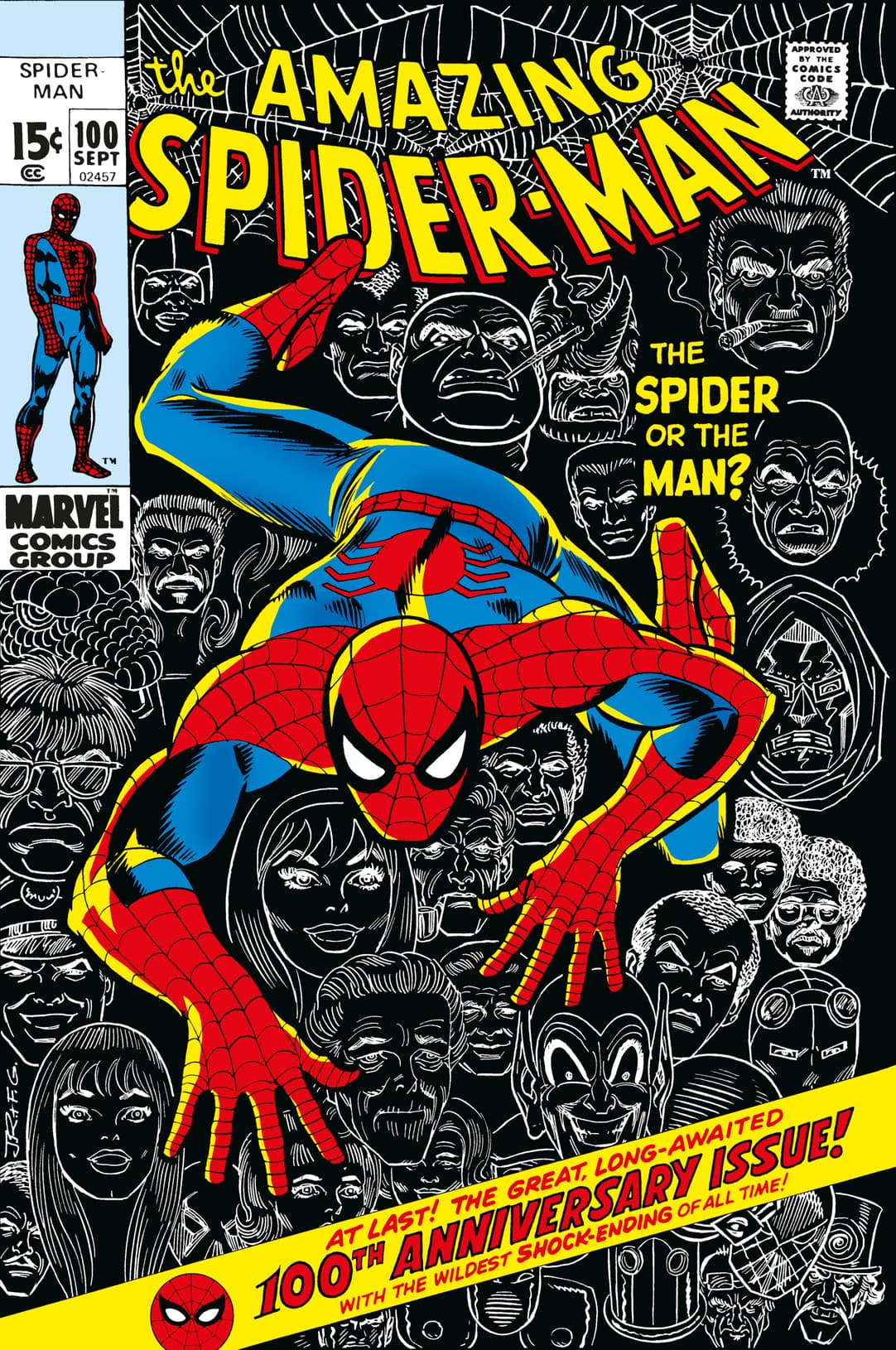On-Sale Now: 'MARVEL’S SPIDER-MAN: THE FIRST 60 YEARS' from Titan
It's Morbin' time with this exclusive excerpt about Spider-Man, Morbius and the 1970s!
The celebration of Spider-Man's first 60 years continues thanks to the awesome team at Titan, today the must-have book for any Spidey fan, Marvel’s Spider-Man: The First 60 Years is now on sale at Amazon, Barnes and Noble, Books-A-Million, Indiebound or your favorite bookstore!
This deluxe book explores the comic book history of Spider-Man, from his origins in the early 1960s to an in-depth guide to his greatest adventures. The book also features the real-life stories behind the creation of his greatest foes including Doctor Octopus, Green Goblin, and Venom and profiles creators who have made the character a breakthrough pop culture icon!

The book contains profiles of his visionary creators, including Stan Lee, Steve Ditko, John Romita Sr., and Dan Slott, along with vintage artwork from the Marvel vaults, this is the ultimate celebration of Spider-Man! And now you can get a sneak peek at the book with this exclusive excerpt from Marvel’s Spider-Man: The First 60 Years!
NO MORE TEEN IN THE USA
The extraordinary ‘60s, the Silver Age of Marvel, ended when Jack Kirby left, but the House of Ideas quickly regrouped. While John Romita and John Buscema were successfully replacing the “King” on The Fantastic Four and Thor, Stan Lee was increasingly busy promoting Marvel and turning it into a multimedia brand, and his adventures with Spider-Man were coming to an end. A transfer of power was just around the corner, so that “The Smilin’ One” could start a new chapter as Marvel’s publisher.

By suggestion of the government’s Department of Health, Lee wrote an unforgettable trilogy included in Issues #96-98 (March-July 1071) to denounce the effects of drug use, which at the time was beginning to spread among young people and was worrying the authorities. The government hoped Marvel could positively influence new generations. Lee and Gil Kane were particularly inspiring: they didn’t use propaganda or boring morals, but gave the readers a heartbreaking, dramatic story, full of tension between Mary Jane, Peter, and Harry Osborn, who found an escape in drugs and ended up overdosing.

But the Comics Code Authority, a self-censoring committee created in the ‘50s to avoid government intervention, refused to approve the issues because the episodes depicted drug use, which (like blood, sex, and violence) was a “banned” topic. This was a contradiction – considering the American government’s explicit request – that Lee refused to entertain. So for the first time, Marvel published comics without the Code stamp on the cover. This was a historic turning point that forced the Authority to loosen its restrictions.

This wasn’t the only revolution involving the super hero who was now Marvel’s best-selling and most popular character. The historic The Amazing Spider-Man vol. 1 #100 (September 1971), “The Spider or the Man?” marked the beginning of the saga about Spider-Man’s transformation into a horrible spidery creature with six arms, caused by Peter’s failed experiment to turn back into a man without super-powers. The next issue also introduced an unforgettable new character: Morbius – the living vampire – a scientist who had messed around with bat DNA to cure his leukemia and turned himself into a terrifying bloodthirsty monster. He was another tortured, complicated villain. But Lee wasn’t the one who told his story: from Issue #101 to #104, right-hand man Roy Thomas stepped in, as he had done for The Fantastic Four. He created the villain along with Gil Kane, and he would soon also become editor-in-chief after Stan was promoted to publisher in 1972. This was the year that Marvel outsold DC, which couldn’t keep up with its rival’s artistic and philosophical innovations. With its imperfect antiheroes, character-driven stories, and modern dialogue, Marvel had ultimately won over the readers.

Read more from Marvel’s Spider-Man: The First 60 Years now on sale from Amazon, Barnes and Noble, Books-A-Million, Indiebound or your favorite bookstore.
The Daily Bugle
Can’t-miss news and updates from across the Marvel Universe!







